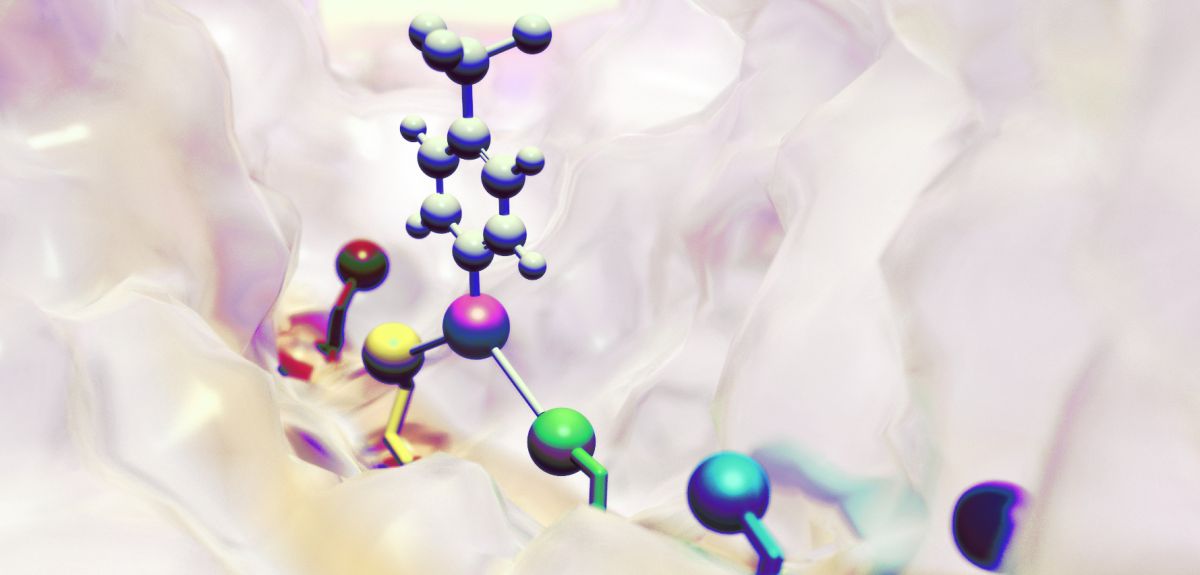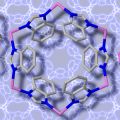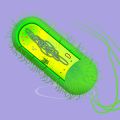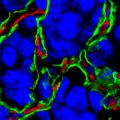
Walker's baby steps towards molecular robots
A walking molecule, so small that it cannot be observed directly with a microscope, has been recorded taking its first nanometre-sized steps.
It's the first time that anyone has shown in real time that such a tiny object – termed a 'small molecule walker' – has taken a series of steps. The breakthrough, made by Oxford University chemists, is a significant milestone on the long road towards developing 'nanorobots'.
'In the future we can imagine tiny machines that could fetch and carry cargo the size of individual molecules, which can be used as building blocks of more complicated molecular machines; imagine tiny tweezers operating inside cells,' said Dr Gokce Su Pulcu of Oxford University's Department of Chemistry. 'The ultimate goal is to use molecular walkers to form nanotransport networks,' she says.
However, before nanorobots can run they first have to walk. As Su explains, proving this is no easy task.
For years now researchers have shown that moving machines and walkers can be built out of DNA. But, relatively speaking, DNA is much larger than small molecule walkers and DNA machines only work in water.
The big problem is that microscopes can only detect moving objects down to the level of 10–20 nanometres. This means that small molecule walkers, whose strides are 1 nanometre long, can only be detected after taking around 10 or 15 steps. It would therefore be impossible to tell with a microscope whether a walker had 'jumped' or 'floated' to a new location rather than taken all the intermediate steps.
As they report in this week's Nature Nanotechnology, Su and her colleagues at Oxford's Bayley Group took a new approach to detecting a walker's every step in real time. Their solution? To build a walker from an arsenic-containing molecule and detect its motion on a track built inside a nanopore.
Nanopores are already the foundation of pioneering DNA sequencing technology developed by the Bayley Group and spinout company Oxford Nanopore Technologies. Here, tiny protein pores detect molecules passing through them. Each base disrupts an electric current passed through the nanopore by a different amount so that the DNA base 'letters' (A, C, G or T) can be read.
In this new research, they used a nanopore containing a track formed of five 'footholds' to detect how a walker was moving across it.
'We can't 'see' the walker moving, but by mapping changes in the ionic current flowing through the pore as the molecule moves from foothold to foothold we are able to chart how it is stepping from one to the other and back again,' Su explains.
To ensure that the walker doesn't float away, they designed it to have 'feet' that stick to the track by making and breaking chemical bonds. Su says: 'It's a bit like stepping on a carpet with glue under your shoes: with each step the walker's foot sticks and then unsticks so that it can move to the next foothold.' This approach could make it possible to design a machine that can walk on a variety of surfaces.
It's quite an achievement for such a tiny machine but, as Su is the first to admit, there are many more challenges to be overcome before programmable nanorobots are a reality.
'At the moment we don’t have much control over which direction the walker moves in; it moves pretty randomly,' Su tells me. 'The protein track is a bit like a mountain slope; there's a direction that's easier to walk in so walkers will tend to go this way. We hope to be able to harness this preference to build tracks that direct a walker where we want it to go.'
The next challenge after that will be for a walker to make itself useful by, for instance, carrying a cargo: there’s already space for it to carry a molecule on its 'head' that it could then take to a desired location to accomplish a task.
Su comments: 'We should be able to engineer a surface where we can control the movement of these walkers and observe them under a microscope through the way they interact with a very thin fluorescent layer. This would make it possible to design chips with different stations with walkers ferrying cargo between these stations; so the beginnings of a nanotransport system.'
These are the first tentative baby steps of a new technology, but they promise that there could be much bigger strides to come.
A report of the research, entitled 'Continuous observation of the stochastic motion of an individual small-molecule walker', is published in Nature Nanotechnology.
 Handheld breath device could 'sniff out' diabetes
Handheld breath device could 'sniff out' diabetes Vibrations reveal how material 'takes a breath'
Vibrations reveal how material 'takes a breath' The puzzle of plasmids
The puzzle of plasmids Cancer turns blood vessels over to its cause
Cancer turns blood vessels over to its cause Brain stimulation for your stammer
Brain stimulation for your stammer